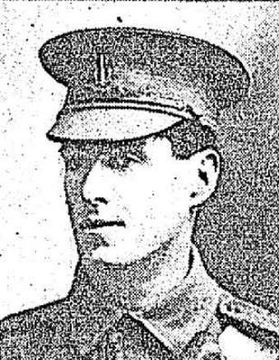PARK, Roy McDonald
| Service Number: | 133 |
|---|---|
| Enlisted: | Not yet discovered |
| Last Rank: | Not yet discovered |
| Last Unit: | 1st Royal Australian Naval Bridging Train |
| Born: | Not yet discovered |
| Home Town: | Not yet discovered |
| Schooling: | Not yet discovered |
| Occupation: | Not yet discovered |
| Memorials: |
World War 1 Service
| 4 Jun 1915: | Involvement 133, 1st Royal Australian Naval Bridging Train, --- :embarkation_roll: roll_number: '24' embarkation_place: Melbourne embarkation_ship: HMAT Port Macquarie embarkation_ship_number: A39 public_note: '' | |
|---|---|---|
| 4 Jun 1915: | Embarked 133, 1st Royal Australian Naval Bridging Train, HMAT Port Macquarie, Melbourne |
Roy M Park RANBT
133 Able Bodied Driver Roy McDonald Park served with the 1st Royal Australian Naval Bridging Train. He enlisted 20 March 1915 at 21 years of age. He was a printing machinist in civilian life. Roy embarked from Melbourne on 4 June 1915 and arrived at Lemnos on the 21 July 1915. The most highly decorated Royal Australian Navy (RAN) unit during World War I was the little known Royal Australian Naval Bridging Train (RANBT). No less than 20 awards for bravery or good service were made to this unit for service at Gallipoli and in the Sinai during 1915-17. The RANBT was then sent to Egypt and disembarked at Port Said on 17 July where they were told to stand by for new orders concerning their future. A few days later they embarked in the troopship Itria with orders to proceed to Mudros, on the Greek island of Imbros. Here they prepared to act as an engineering unit to support the British landings at Suvla Bay to the north of ANZAC Cove on the Gallipoli Peninsula. During this time they were to be under British command and control.
Early on the morning of 7 August 1915 the Bridging Train landed under fire at Suvla Bay and was directed to build a pontoon pier to enable supplies to be brought ashore. The campaign ashore at Suvla was an ill conceived event and poorly led with the advance soon becoming bogged down and dissolving into trench warfare similar to that at ANZAC Cove and Cape Helles. The RANBT set up their camp at what became known as Kangaroo Beach and became responsible for the wide variety of logistics tasks such as building and maintaining the wharves and piers, unloading stores from lighters, controlling the water supply to the front line troops, stockpiling engineering equipment, and repairing equipment in an open air workshop.
All of these activities took place under frequent enemy artillery fire and occasional air raids which, during their five months at Suvla Bay, killed two and wounded over 60. Two more men died from disease and many others became sick or were injured while carrying out their duties. Despite the regular arrival of re-inforcements from Australia the unit was always under strength due to illness or wounds. In December 1915 the decision to evacuate the Peninsula was made and troops began to be taken off the beaches at night. All of this work required the wharves to be in constant use and the men of the RANBT were kept busy repairing damage caused by the enemy or wayward boat coxswains.
The bulk of the men of the RANBT were evacuated on the nights of 16 and 17 December 1915 , but a small group of 50 men under Sub Lieutenant Charles William Hicks remained behind at Lala Baba Beach, in the southern part of Suvla Bay, to maintain the wharf over which the British rearguard would leave from. These men were kept busy maintaining the wharf and were not evacuated until 0430 on the morning of 20 December 1915, thus becoming the last Australian's to leave the Gallipoli Peninsula. The last Australian troops had left ANZAC Cove at 0410 the same day.
During April 1916 some 88 men were permitted to transfer to the 1st Australian Imperial Force (AIF) and departed the RANBT for service on the Western Front.
Roy Park transferred to the 12th Field Artillery Brigade and disembarked Marseilles France on the 9 June 1916. He transferred to the 11th FAB and was granted leave to the UK on the 2 October 1917. He returned to Belgium on the 15 October 1917 but was admitted to hospital with VD a few days later, and was then in hospital for about 29 days. During May 1918 he was transferred to the AIF Headquarters in London, and on the grounds that he was a member of the Navy and not the AIF the GOC of the AIF allowed him to be returned to Australia 6 June 1918.
Submitted 4 January 2015 by Stephen Brooks









